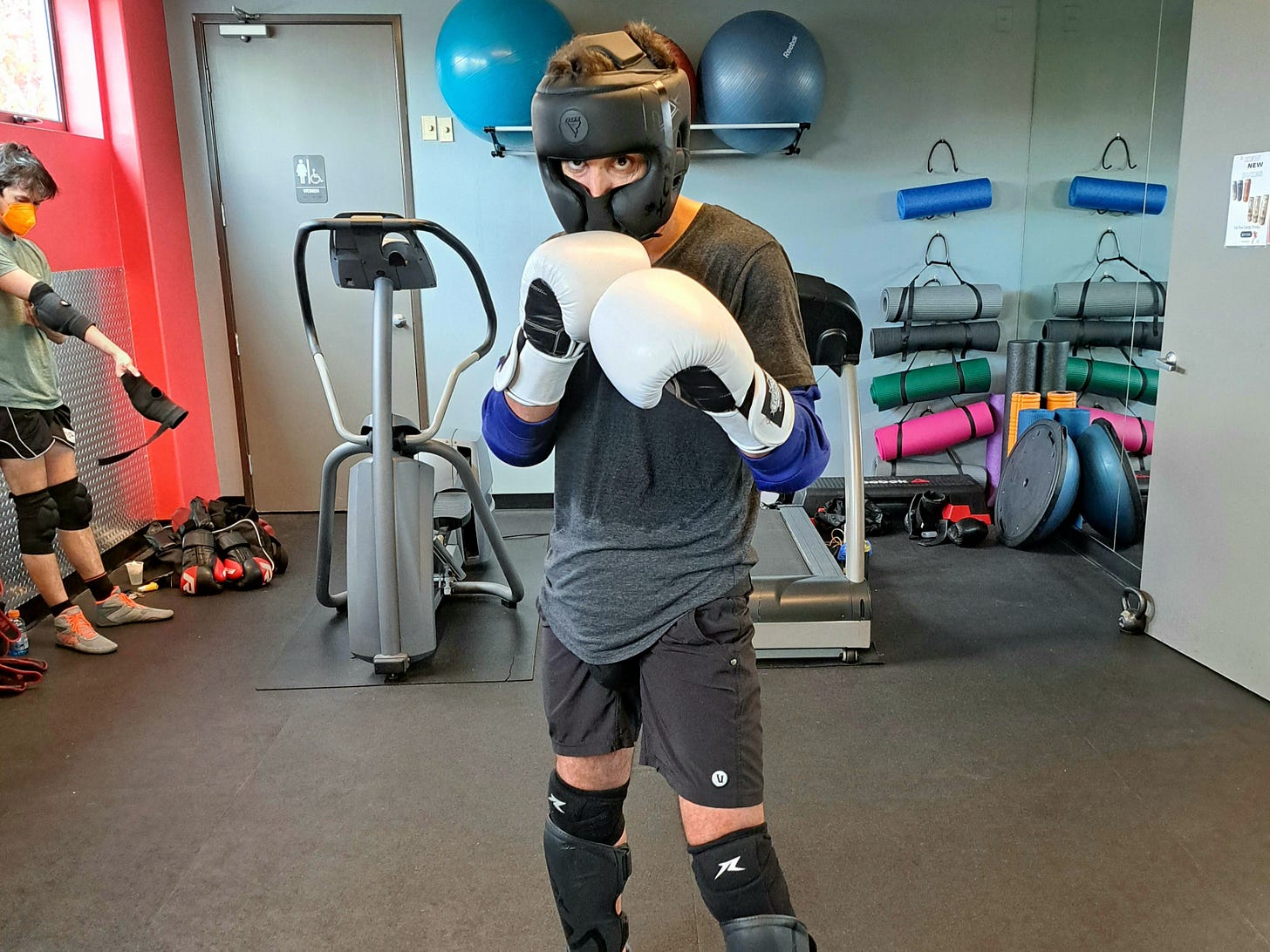When you're sparring, you can't look down at your feet (or at least you shouldn't). You also can't look at yourself in the mirror. Your eyes must be on your opponent, and your body must orient to them. Since your eyes face out and you can't see your body or get a bird's eye view of you and your opponent, the only clues to your body position and your orientation to your partner are what you see before you. The art of understanding your positional relationship with your opponent is wayfinding.
Your opponent gives you all the information you need regarding your body position and your orientation to them and their orientation to you. When you see your opponent directly before you, they are in front of you. They are in the path of your front attacks, such as the front kick and, later on, jabs and rear straights.
Think of your visual perception as a screen. When the opponent is at the center of your screen, they are in front of you. This might seem intuitive and easy to understand, but it's not easy to recognize since most people have never spent time thinking about what being in front means or what that looks like, especially with the added dimension of closeness and farness. It takes lots of practice.
On your first day of sparring, you might think your partner is in front of you, but are they actually in the middle of your screen? When your opponent moves slightly off center, they are no longer parallel and straightforward but adjacent. Since they are close to center, you might not recognize you are no longer facing your opponent, but they are facing you. You'll be in line for their attacks, while your front attacks might miss.
You might also move adjacent to your partner and not recognize it, missing your attacks altogether or losing balance.





